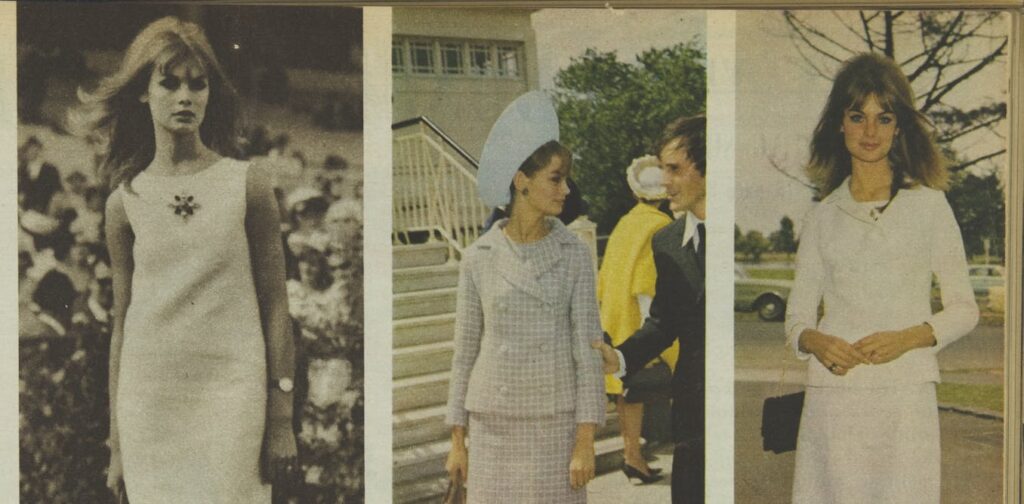
On October 30, 1965, English model Jean Shrimpton caused a significant stir at the Melbourne Cup by wearing a daring minidress that defied the conservative fashion norms of the time. This bold choice not only shocked attendees at the Flemington Racecourse but also marked a pivotal moment in Australian fashion history. Shrimpton, then just 22 years old, showcased a style that challenged traditional expectations by opting for a simple dress that exposed more skin than was typically acceptable at such events.
Sewn just 10 centimeters above the knee, her minidress became iconic, signalling a shift towards more casual and youthful fashion trends. While this outfit would not raise eyebrows today, its impact in 1965 was profound. Shrimpton’s appearance at the Derby Day has since been credited with initiating a cultural change in Australia, promoting a new era of fashion that embraced youth culture.
Behind the Glamour: The Sponsorship Deal
Contrary to popular belief, Shrimpton did not arrive in Australia with the intention of shocking the crowd. Her presence was orchestrated by DuPont de Nemours Inc, a multinational chemical and textile company. The Victoria Racing Club had invited various textile producers to showcase their products during the event, hoping to draw larger crowds to the newly introduced Fashions on the Field segment. DuPont seized this opportunity and hired Shrimpton to promote its synthetic fibre, Orlon, which was relatively unknown in the fashion industry.
In preparation for the event, Shrimpton received Orlon fabric to create her dress, but stories circulated that she had insufficient material to work with, leading to the controversial hemline. In her 1990 autobiography, she suggested that DuPont had not provided enough fabric, but clarified that she would have worn a similar style regardless, as short skirts were in vogue at the time.
When Shrimpton and her boyfriend, English actor Terence Stamp, arrived at Essendon Airport just a day before the Cup, they were already 24 hours late. The planned welcome party was cancelled, leaving an elaborate ice carving in the shape of a shrimp to melt without an audience. With no time to change or refresh, Shrimpton was hurriedly taken to the racecourse, where her appearance would soon spark outrage.
Public Reaction and Lasting Impact
As Shrimpton entered the members’ enclosure at the Melbourne Cup, her outfit clashed with the strict dress code that defined the space. The crowd’s reaction was one of indignation, reflecting a broader societal discomfort with her unconventional style. Shrimpton’s arrival was met with a mix of disdain and media frenzy, as reporters capitalised on the situation to criticise both her fashion choice and Australia’s provincialism.
“Critics blasted Shrimpton’s supposed lack of etiquette, while the media eagerly fanned the flames of controversy.”
Despite the backlash, Shrimpton maintained her right to express herself through fashion. Nonetheless, the experience left her feeling bruised and disappointed. DuPont’s role in the spectacle was largely overlooked as the focus shifted to Shrimpton, who had become a symbol of change in the Australian fashion landscape.
In the aftermath, DuPont swiftly attempted to manage the situation by providing Shrimpton with a hat and stockings for the Cup Day meeting. However, they soon realised that the controversy surrounding her appearance was generating publicity, which they embraced as a marketing opportunity. The company seemed to reflect the philosophy of 19th-century showman P.T. Barnum, who famously stated, “there is no such thing as bad publicity.”
Today, six decades later, Jean Shrimpton remains an iconic figure in fashion history. Her bold choice at the Melbourne Cup not only challenged societal norms but also ushered in a new era of style that resonated with Australian youth. While her appearance is often remembered for its immediate controversy, it is essential to acknowledge the sponsorship and marketing strategies that played a crucial role in shaping this momentous event.
Through a combination of celebrity influence and corporate backing, Shrimpton’s legacy continues to inspire and evoke discussions about fashion, identity, and cultural evolution in Australia.







